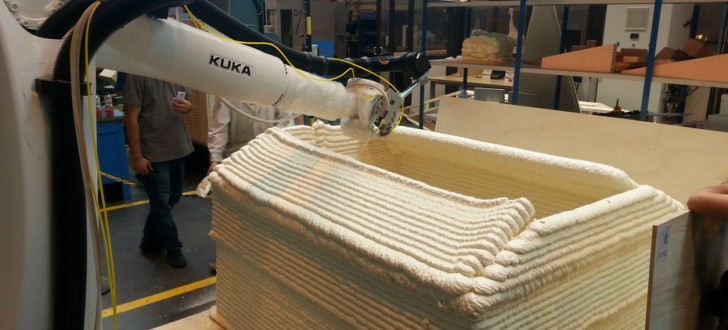While still in its infancy, house printing is no longer a novel concept, but researchers at the University of Nantes (IRCCyN) are working to speed up the technology in order to print large structures where they may be needed most quickly. The INNOprint 3D is a 3D printer meant to make emergency housing in the span of twenty to thirty minutes.
In conjunction with the university’s subsidiary, CAPACITES SAS, the IRCCyN researchers were able to make their INNOprint 3D robotic arm capable of 3D printing emergency housing at 3 meters high by 3 meters squared. On top of that, the shelter is fully sealed, insulated, and completed in just twenty to thirty minutes. Hypothetically, the arm would be shipped to a disaster area with raw materials, according to Prof. Benoit Furet, of the IRCCyN team (Google translated from French), “You have to imagine that, in a disaster, the robot will be shipped by boat together raw material containers and the human relief. There, on demand, according to the desired size, in 20 to 30 minutes, an emergency housing can be realized and used for several months until a more permanent reconstruction is established.”
The project is only in its beginning stages, as the university will work with the he Research Institute in Civil and Mechanical Engineering – GEM to develop new materials and produce shelters that meet emergency standards. The group will also attempt to expand the height of the machine’s output so that it can print an unlimited length on the horizontal axis and up to seven meters high.
One expert in the field of house printing has told me that an issue of concern for anyone using robotics for construction is how these machines hold up in the elements, telling me that they may be prone to damage in the outdoors. This would be of particular concern for these researchers who plan to use their machines in a disaster scenario. Either way, I hope that they can pull it off, as any help for those facing the devastating effects of natural disasters may be good help.



